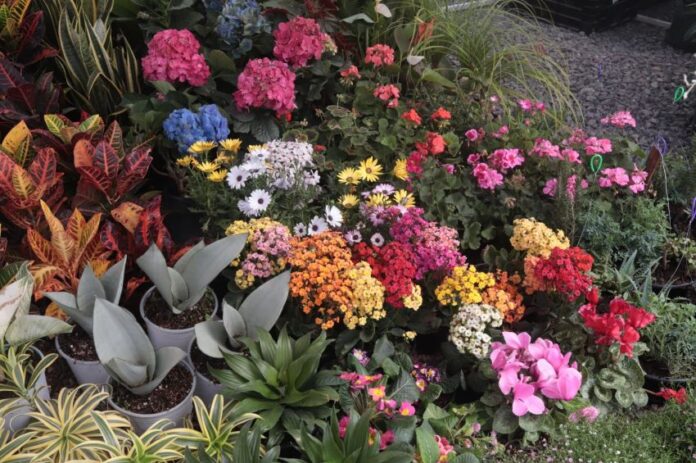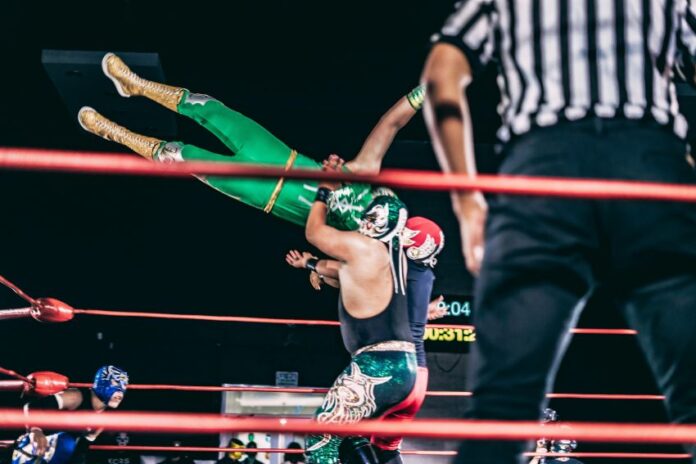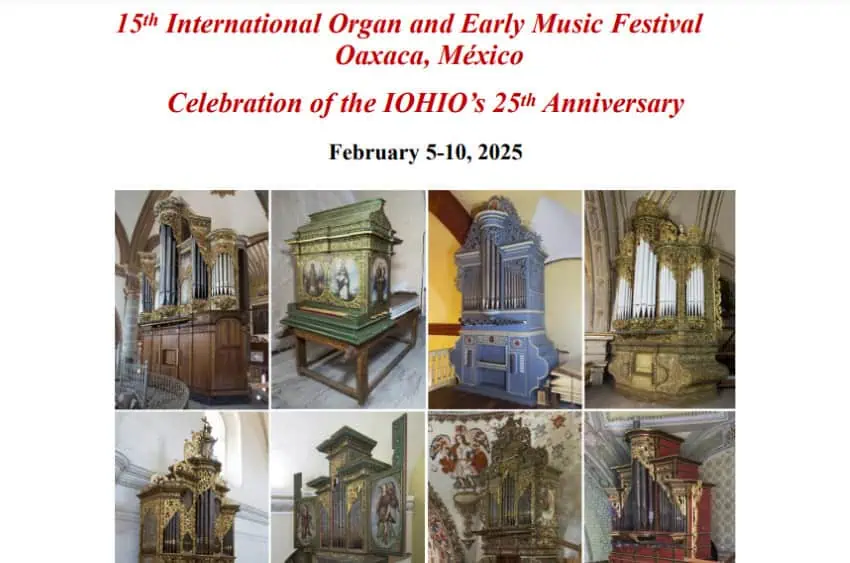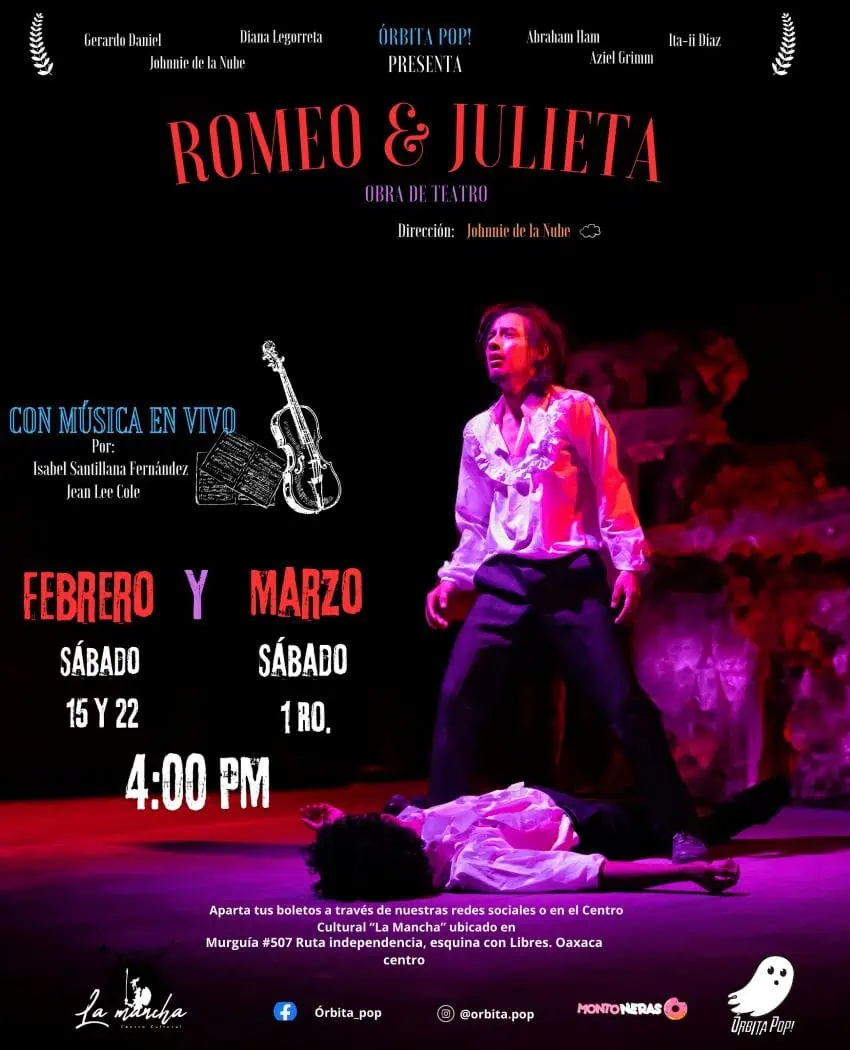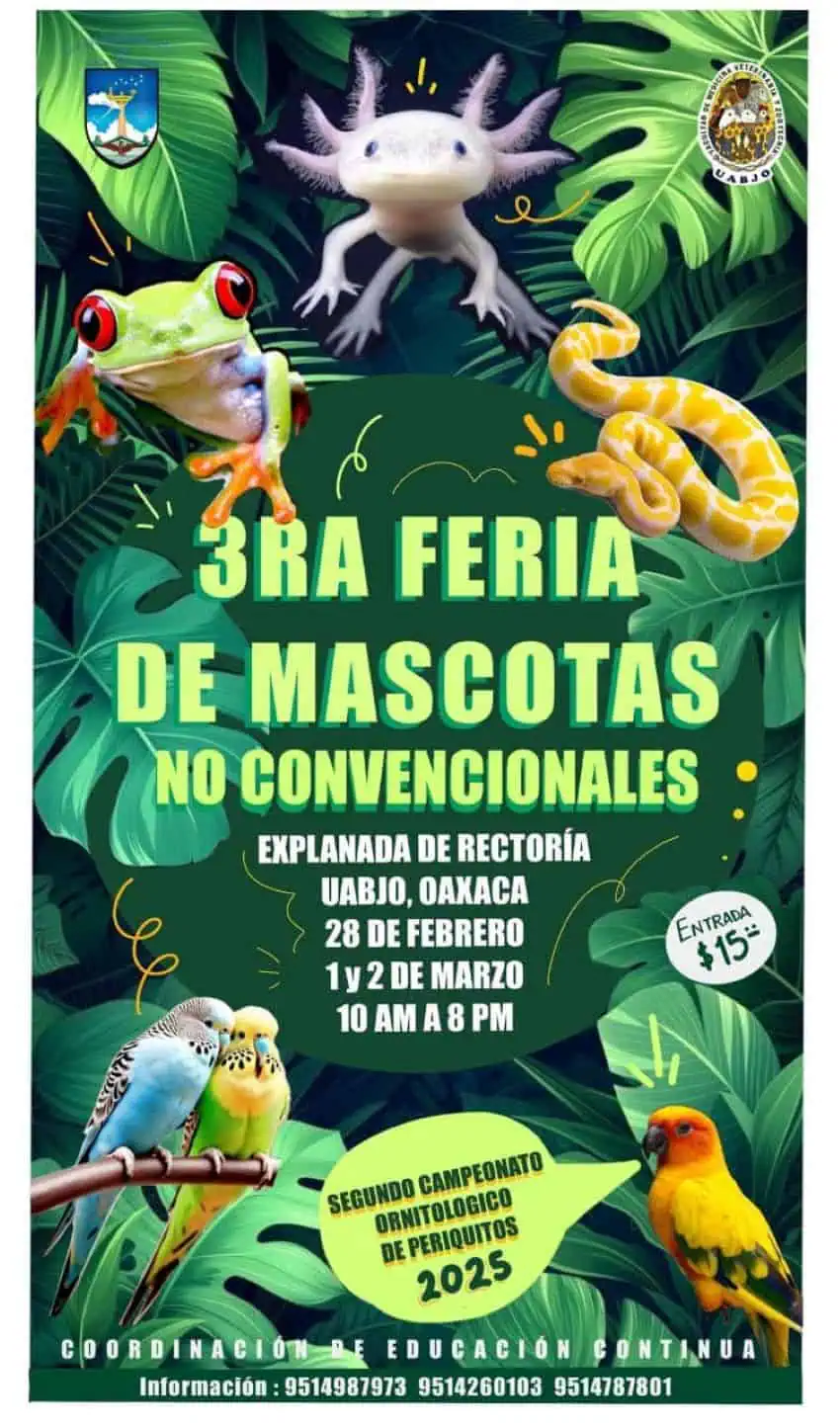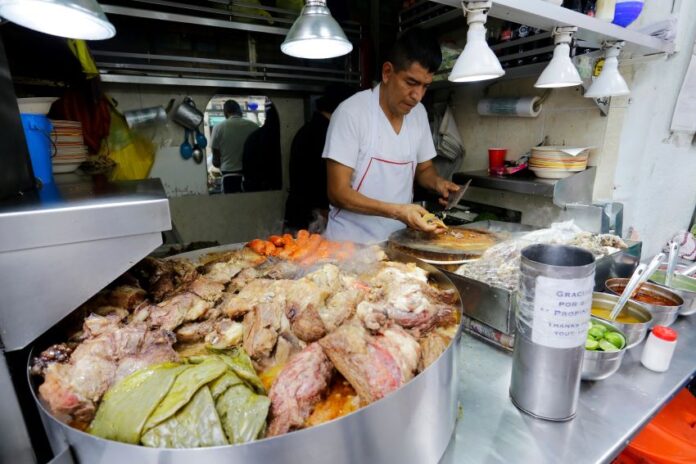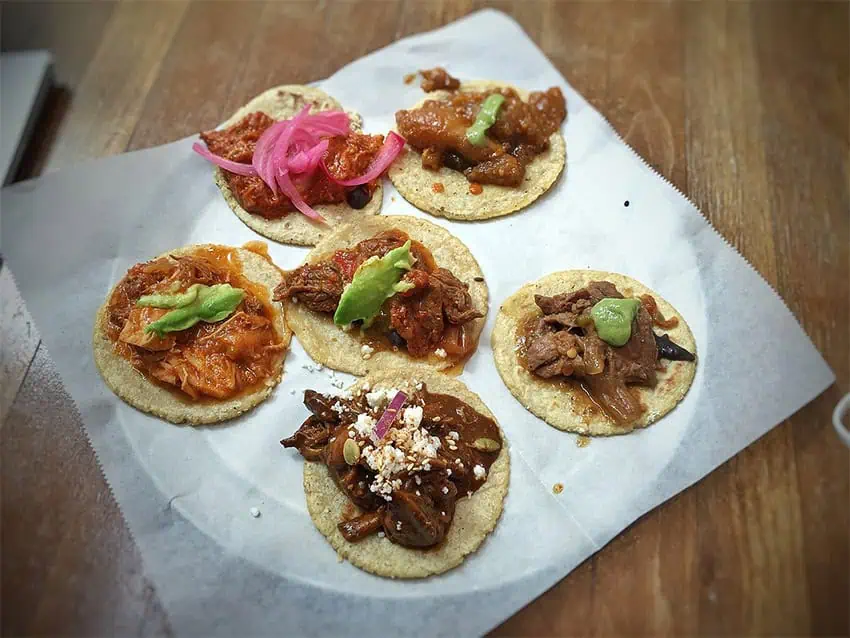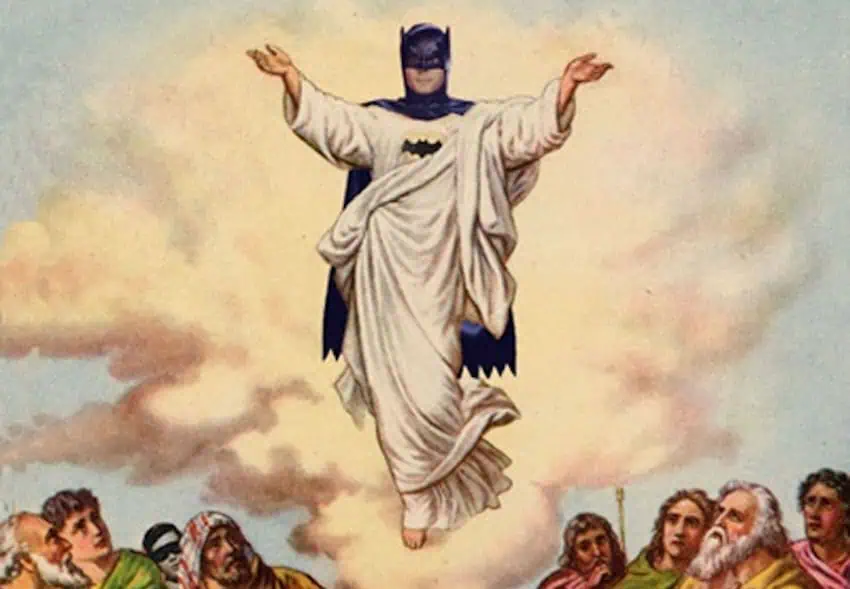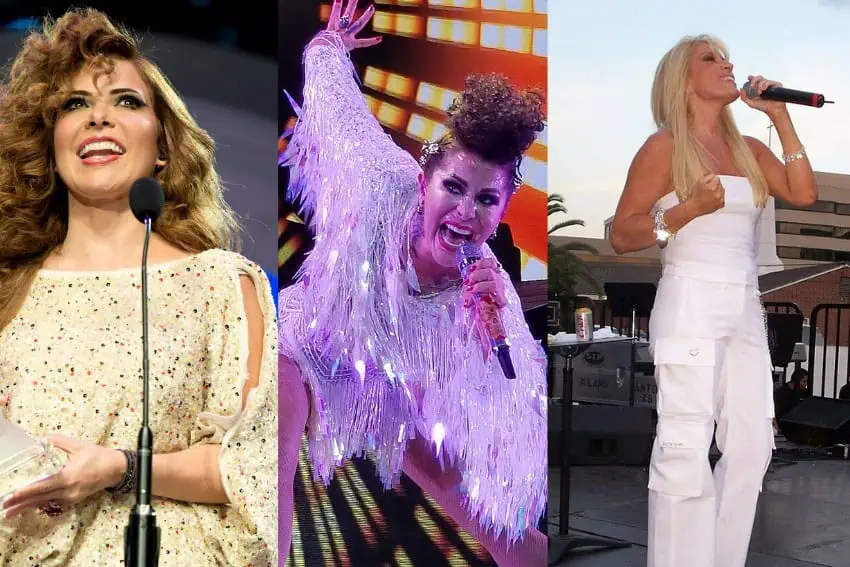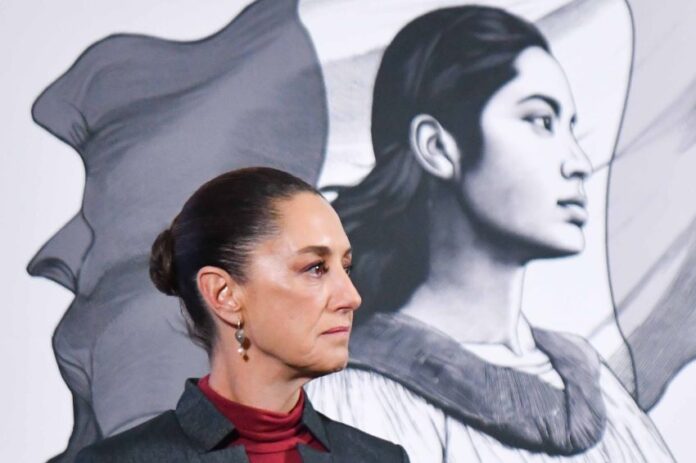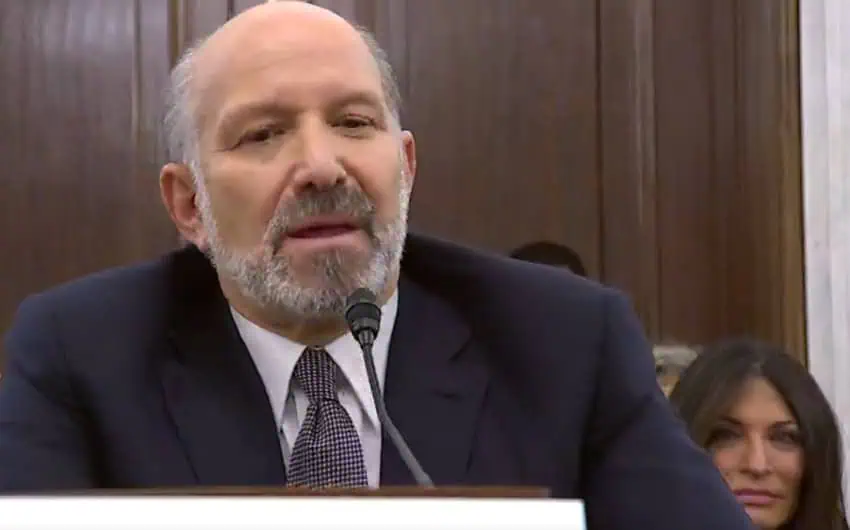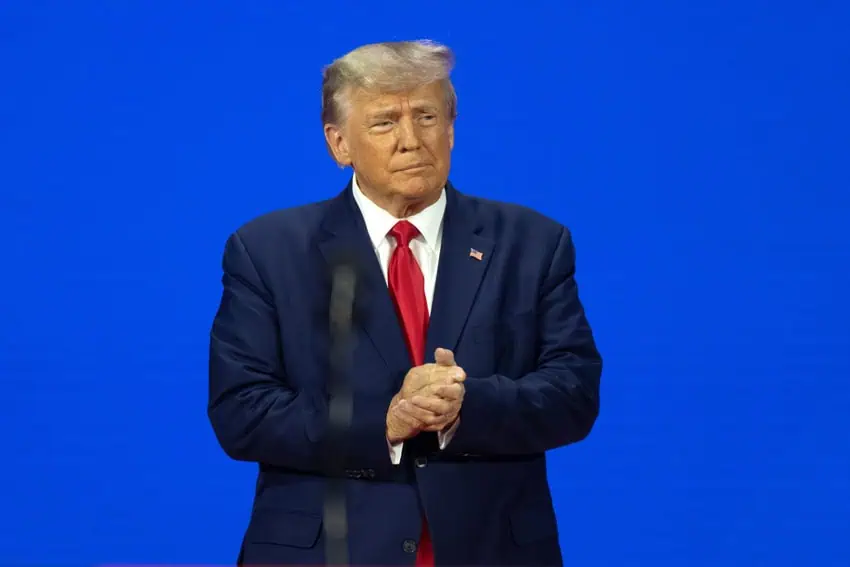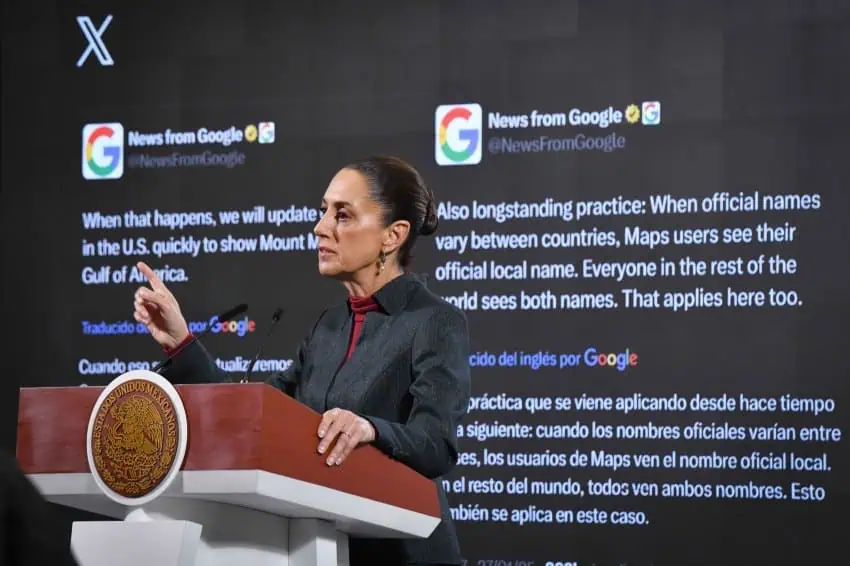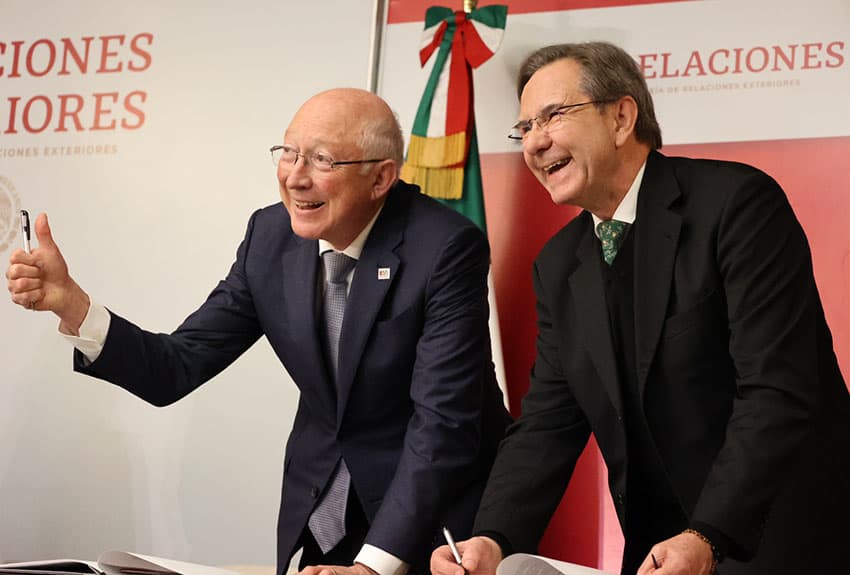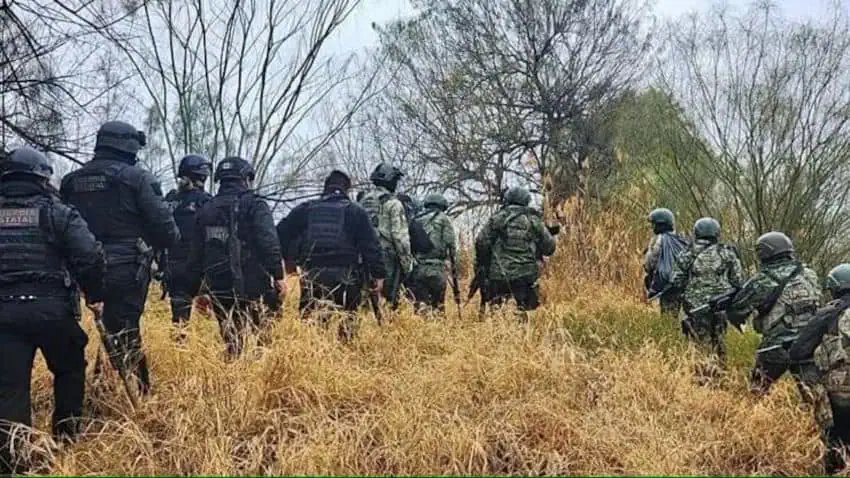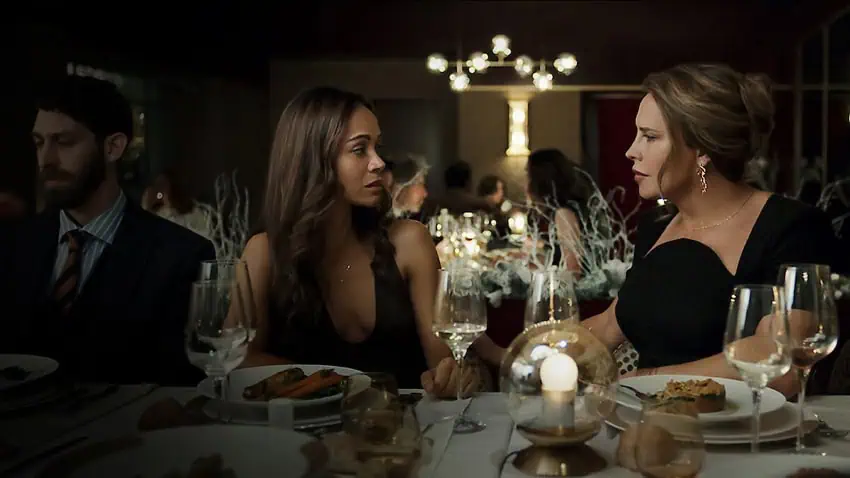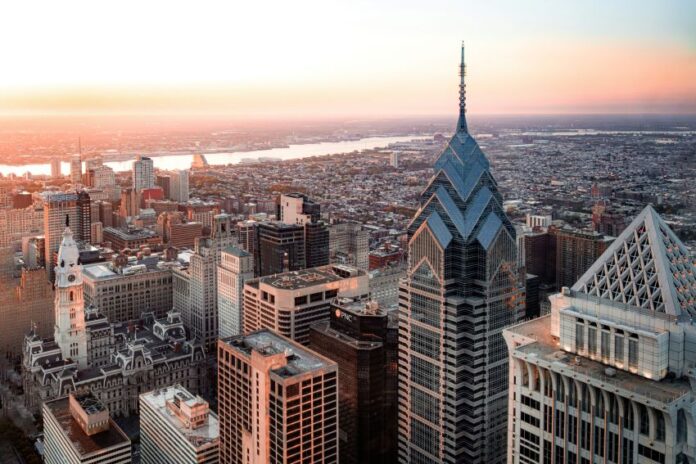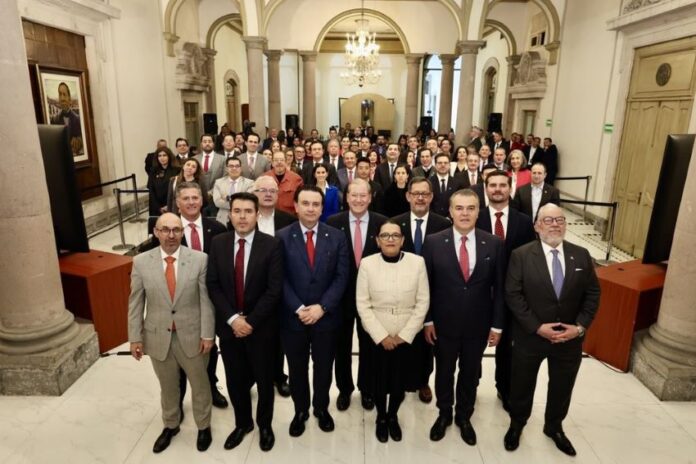February arrives in San Miguel de Allende with a vibrant mix of cultural, artistic and musical events, which means it’s time to ask what’s on in the coming weeks. From celebrating long-standing traditions like the Feria de la Candelaria and its workshops to live performances that span opera and mesmerizing dance shows, this month offers something for everyone.
Highlights include the 20th anniversary of the San Miguel Writers’ Conference, the soulful melodies of the Gil Gutiérrez Trio and the exciting debut of Soul Fusion’s Black History Month festival. Whether you’re exploring local traditions, connecting with the finest in literature or dancing to the beats of electronic music, February in San Miguel is packed with events to inspire and entertain.
Feria de la Candelaria
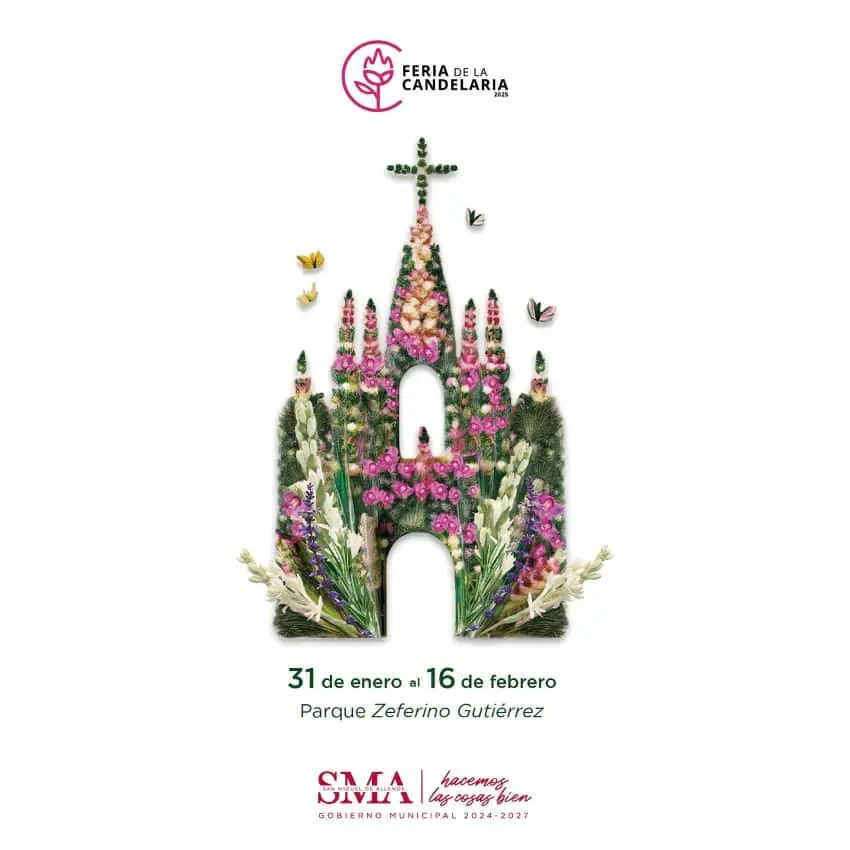
February brings the 49th edition of the beloved Feria de la Candelaria, now set in the scenic Parque Zeferino Gutiérrez. This cherished event features over 100 exhibitors offering an incredible variety of plants, pots and gardening supplies. Traditionally held at Parque Benito Juárez, the fair has moved due to logistical changes stemming from the construction of the Waldorf Astoria Hotel on Cardo. The new location provides spacious grounds to explore and purchase an incredible array of beautiful plants.
Over two weeks, the Feria de la Candelaria offers a variety of engaging events. Participate in workshops on rural medicine or learn about the endemic animals and plants of San Miguel de Allende. Tap into your creativity with a fun floral mixology class or immerse yourself in the soulful experience of a cacao ceremony. Music lovers will especially enjoy the heartfelt musical tribute to Juan Gabriel. There’s something for everyone to enjoy!
Date: Jan. 31 to Feb. 16
Location: Parque Zeferino Gutiérrez
Cost: Free entry
La Mandrágora y Otras Yerbas
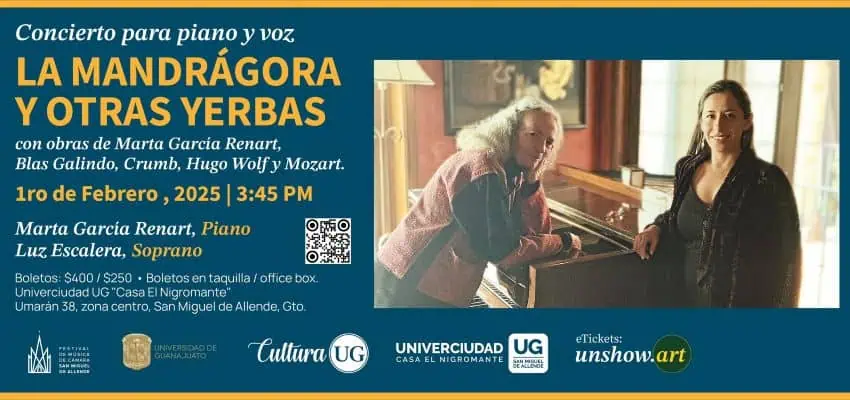
This special recital features two celebrated artists: pianist and composer Marta García Renart, known for her distinguished career that includes performances at Carnegie Hall and impactful work as a music educator, and soprano Luz Escalera, a talented performer with a solid international career. The concert offers a captivating mix of classical and Mexican music, including works by Mozart, Hugo Wolf, George Crumb and Fauré, alongside pieces by Marta García Renart and Blas Galindo. This unique program promises to celebrate European classical traditions and Mexico’s musical roots.
Date: Feb. 1, 3:45 pm
Location: Univerciudad Casa El Nigromante, Umarán 38, Centro
Cost: Tickets start at 280 pesos
Midwinter ceremony with an Amazonian spiritual elder
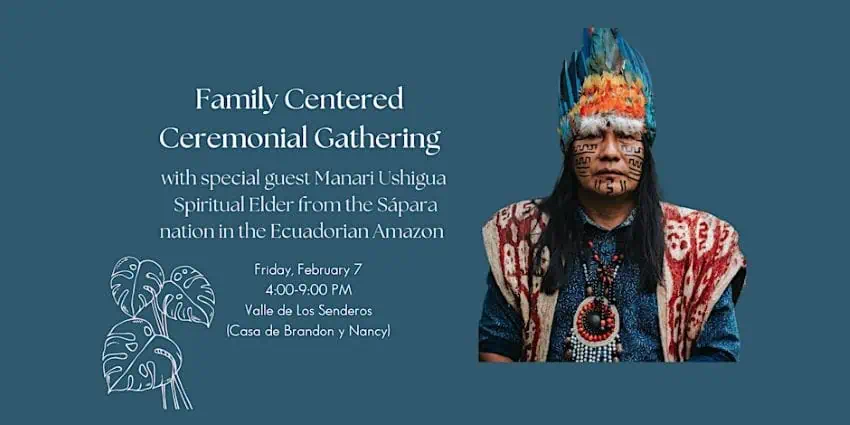
This spiritually rich gathering honors the midpoint between winter and spring, a time of renewal and connection. The highlight of the evening is a cacao ceremony led by Manari Ushigua, a revered elder and healer of the Sápara nation in the Ecuadorian Amazon, who will share the rainforest’s vibrant energy. The event also includes a sacred fire at sunset and a light tamale dinner, creating a powerful and reflective experience. All profits benefit Manari’s mission to support his Amazonian community.
Date: Feb. 7, 4 to 9 p.m.
Location: Montolea 11, Valle de los Senderos
Cost: 500 pesos
Noches Lúcidas House & Techno
View this post on Instagram
Born in 2018 as a beachfront block party in Nayarit, this roaming party has since held more than 50 events throughout Mexico and the United States. This electrifying event blends deep-tech vibes inspired by nightlife capitals like London and Berlin with the minimal melodies of Tulum. Founders Santa María Rivera, Bgeezy and Fouad Masoud will deliver back-to-back sets, joined by talented DJs from Morelia and Querétaro. With mesmerizing music, vibrant lights and an inclusive atmosphere, it promises to be an unforgettable night of house music and dancing.
Date: Feb. 7, 7:00 pm to 2:00 am
Location: Sai-Kó Nigiri Lounge, Calle Hernandez Macias, Centro
Cost: 150 pesos.
The Marriage of Figaro

Experience the magic of Mozart’s “The Marriage of Figaro,” widely regarded as one of the greatest operas ever composed. This sequel to Rossini’s “The Barber of Seville” follows the comedic escapades of Figaro as he thwarts Count Almaviva’s attempt to exercise feudal rights over Susanna, Figaro’s bride-to-be. The opera features a captivating mix of mistaken identities, hilarious subterfuge and breathtaking arias.
The stellar cast includes Alberto Albarrán as Figaro, Enrique Angeles as the Count, Anabel de la Mora as Susanna and Jacinta Barbachano as the Countess, accompanied by Pro Musica’s outstanding orchestra. From its lively overture to its moving duets and ensembles, this performance will have you laughing and marveling at the genius beauty of Mozart’s music. Don’t miss this exquisite blend of humor, drama and timeless musical artistry.
Date: Feb. 7, 5 p.m.
Location: Teatro Angela Peralta, Centro
Cost: Starting at 300 pesos
Gil Gutiérrez Trio with Dave Rodriguez and Robert Stern
Celebrate Valentine’s Day with an evening of enchanting string music at Teatro Santa Ana. Renowned guitarist Gil Gutiérrez will be joined by two extraordinary musicians from New York, Dave Rodriguez on double bass and Robert Stern on violin, for a captivating trio performance. This intimate concert promises a stirring musical experience. Whether you’re a fan of classical strings or simply looking for a unique way to spend the evening, secure your spot for this special night!
Date: Feb. 14, 6 p.m.
Location: Teatro Santa Ana, Relox 50A
Cost: 550 pesos, tickets available at the theater’s box office
Darbukanos Dance

Celebrate the ninth anniversary of dance ensemble Darbukanos with a dazzling performance that transports audiences through the rich cultural tapestry of Turkish, Arab, Macedonian, Sephardic and Balkan music and dance. Founded by renowned dancer and choreographer Fridha Chacón, this talented ensemble of Mexican performers delivers a breathtaking display of hypnotic belly dances and music. Their artistry is complemented by vibrant costumes adorned with shimmering fabrics and intricate designs, which enhance the visual spectacle and deeply connect the audience to the cultural roots of this exciting show.
Date: Feb. 15, 6 p.m.
Location: Teatro Angela Peralta, Centro
Tickets: 400 pesos, available at the theater’s box office
San Miguel Writers’ Conference & Literary Festival

Celebrate the 20th anniversary of the San Miguel Writers’ Conference with a dazzling lineup of literary greats! The keynote lineup includes literary luminaries like John Irving, Percival Everett, Kaveh Akbar, John Vaillant, Jorge F. Hernández, Ruth Reichl and Jennifer Clement.
The festival offers a variety of engaging activities, including agent pitch sessions, individual consultations, post-conference workshops, open mic nights, a poetry fire circle, the Big Read event and exciting excursions. Whether you’re a seasoned writer or an avid reader, immerse yourself in this vibrant literary celebration. For the first time, the festival is honoring its home country by offering all Spanish-speaking programs at no cost to Mexican nationals. Simultaneous interpretation for presentations in English and Spanish.
Date: Feb. 12 to 16
Location: Hotel Real de Minas, Colonia San Antonio
Cost: Packages available online
Black History Month Music, Art & Food Festival
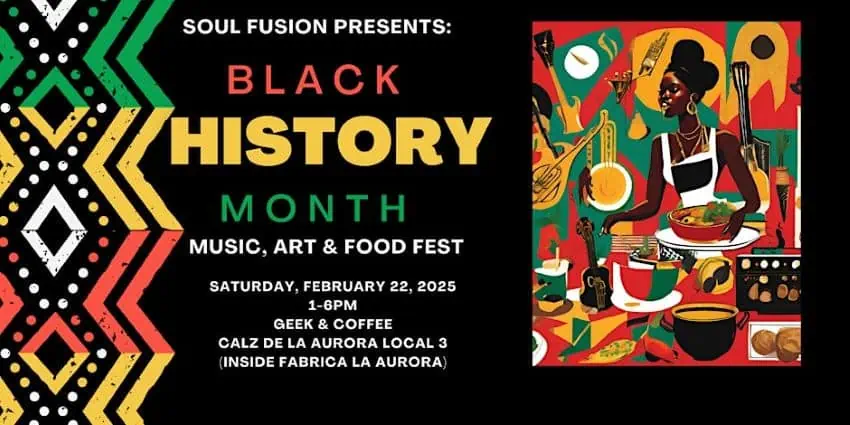
Celebrate Black American heritage and culture at Soul Fusion’s inaugural festival in San Miguel de Allende! This gathering in honor of Black History Month in the U.S. will be hosted at Geek & Coffee, a charming restaurant with a beautiful garden next to the duck pond within the fabulous Fabrica La Aurora. The celebration features live music performances by StephyLoren, Dr. Jackie “Bouvier” Copeland, Danielle Simmons and Carlos Pirex. Enjoy the offerings of incredible artisans and food vendors, plus a health and wellness area and kids’ corner for family-friendly fun. Soul Fusion is a global music movement dedicated to preserving and advancing Black music heritage through education, performances and public awareness. Everyone is welcome to join in this celebration!
Date: Feb. 22, 1 to 6 p.m.
Location: Geek & Coffee at Fabrica La Aurora
Cost: 300 pesos, kids enter for free
Hands-on jewelry design workshop with Matthew Gross

Unleash your creativity at this immersive jewelry design workshop led by the talented Matthew Gross. This hands-on experience invites participants of all ages to dive into the fascinating world of jewelry making. In this workshop, you’ll not only expand your jewelry-making skills but also draw inspiration from the beauty around you to create truly unique designs. Learn how to develop simple shapes into intricate pieces, understand the evolution of design forms over time and discover innovative problem-solving approaches that apply to other areas of design.
Date: Feb. 26, 2:45 p.m.
Location: Sala Quetzal at the Biblioteca Pública
Cost: Voluntary Donation in benefit of La Biblioteca
Sandra Gancz Kahan is a Mexican writer and translator based in San Miguel de Allende who specializes in mental health and humanitarian aid. She believes in the power of language to foster compassion and understanding across cultures. She can be reached at [email protected].
